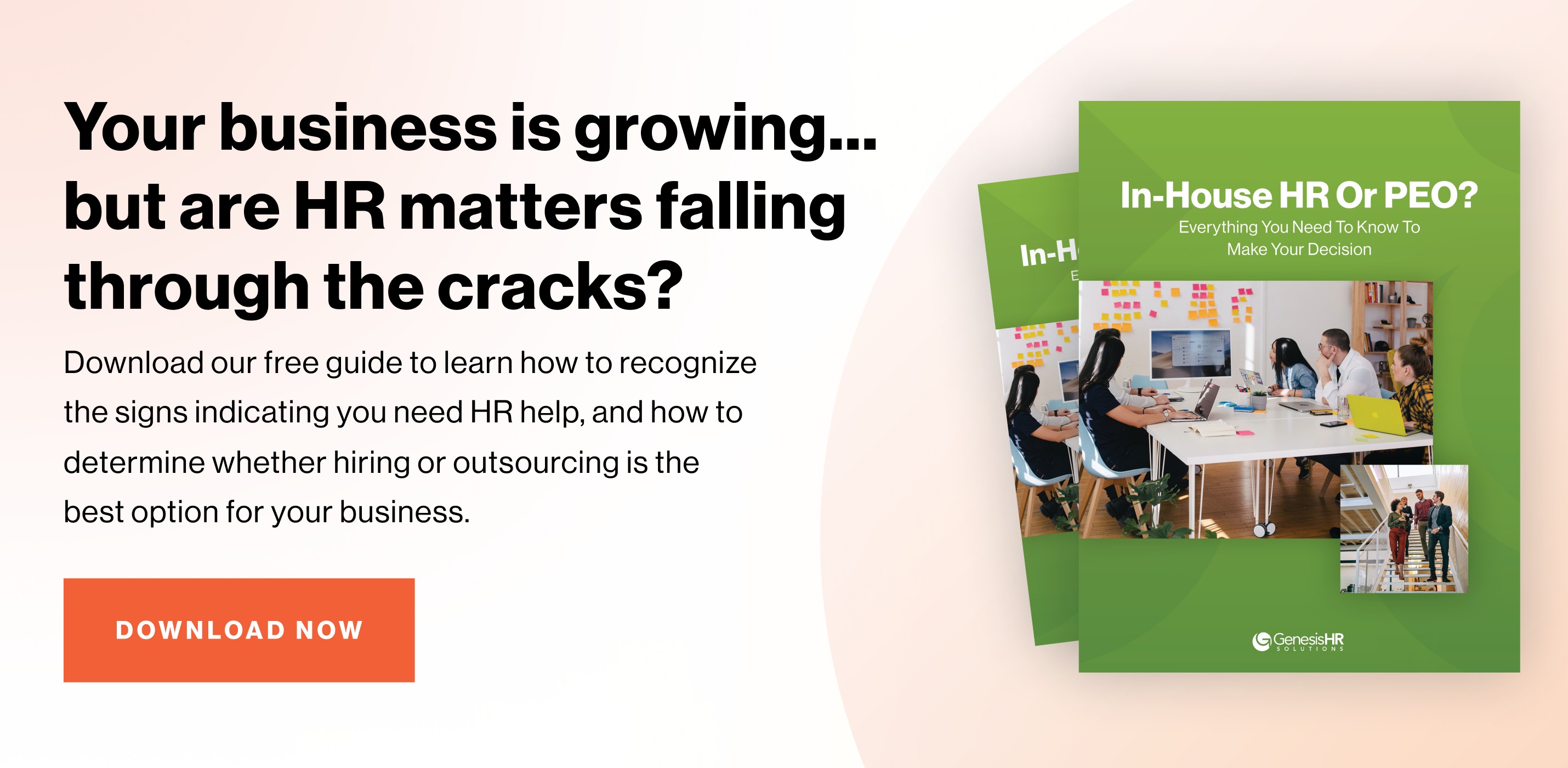- A PEO contract, also known as a PEO agreement or PEO client service agreement, is a legal document that spells out who’s responsible for what in the co-employer arrangement.
- PEO agreements contain two parts: Part A, a client service agreement and Part B, which includes terms and conditions, fees and payment terms, a schedule of employee benefit plans, and state-specific provisions.
- This article is recommended for a small or midsize business owner or HR manager who is interested in learning about the details of a PEO agreement: what’s included, what’s not, and what to look out for as they interview prospective PEO partners.
Wondering what a contract with a professional employer organization (PEO) might entail? In this post, we’ll go through what you can expect to find in a PEO agreement—and how this agreement is important to your relationship with a PEO.
What is a PEO agreement?
A PEO agreement (also known as a PEO client service agreement) is a legal document that precisely spells out who’s responsible for what in the co-employer arrangement. In addition to identifying responsibilities of each party, the agreement also defines what employees are covered under the agreement.
A PEO agreement (also known as a PEO client service agreement) is a legal document that precisely spells out who’s responsible for what in the co-employer arrangement. Click To TweetGet an in-depth explanation of what PEOs are and how they benefit small businesses. Download Everything you need to know about PEOs: A step-by-step guide today!
What does a PEO agreement contain?
At GenesisHR, our PEO agreement has two parts: Part A, a client service agreement and Part B, which includes terms and conditions, fees and payment terms, a schedule of employee benefit plans, and state-specific provisions.
Part A
Part A is about two pages long and contains the following:
- A statement of the relationship established and restriction of liabilities between Genesis and the client.
- The services Genesis will provide, including:
- Employee benefits
- 401(k) plans
- Workers’ compensation
- Employer compliance
- Employer practices liability insurance
- Payroll processing and tax administration
- Human resource policies and practices
- Access to online HR information systems
- Personnel records
- Unemployment
- Additional elective services
- The terms of the contract: the date on which the PEO agreement becomes effective and the length of the agreement.
- Terms and conditions (outlined in part B of this article).
- Exhibits
- Signature lines for both the client and the PEO.
Part B
Part B is longer than Part A and contains the meat of the document—a line-item look at the expected costs of the PEO relationship. It includes the following sections:
- Terms and conditions
- Fees and payment terms
- A schedule of employee benefit plans
- State-specific provisions
Part B goes through the details of each aspect of the PEO relationship from a legal perspective, from processing payroll to securing insurance to remitting taxes to 401(k) administration.
It also defines the co-employment relationship—responsibilities touch both employers, but the PEO takes the burden of administration.
Why PEO Agreements Matter: Transparency & Expectations
Transparency
Everything outlined in your PEO agreement should be clear to you. In plain English, it should explain your company’s expectations, the PEO’s expectations, and the cost of the services the PEO will provide.
Unlike what you may have heard about other PEOs, at Genesis, we pride ourselves on being upfront with our clients about our pricing. We don’t want you to be surprised by any costs, so all fees are clearly indicated as line items in the agreement.
Expectation-setting
Additionally, the PEO arrangement you sign should set clear expectations of both the PEO and the PEO client. It’s imperative to read through your PEO agreement and understand what exactly you’re entering into, just like with any legal document. (Practically, that means don’t stop reading your agreement just because it’s long!)
Resource Reallocation
One benefit of a PEO agreement that sometimes surprises clients: It may help your company identify where it can reassign administrative resources. Because the HR roles and responsibilities are outlined in the contract, you can clearly see what’s shifting over to Genesis; you can then use this as a template for identifying areas that can be reassigned to other, more important roles within the business.
Red Flags To Look For In PEO Agreements
- Pricing structure is not transparent. Many companies, including PEOs, sometimes “hide” fees in their contracts or pricing structure. Before you agree to sign a contract, make sure you understand how much you are paying and what deliverables you can expect.
- You don’t understand or agree to the expectations set forth in the agreement. If you don’t understand or don’t agree with the PEO agreement, it’s a hard stop! That means you also need to read the entire contract, top to bottom.
- There is no contract. A PEO agreement should be a legal document, as you will be legally partnering with a different company to help you run your business. There is no room for verbal agreements.
- There are no state-specific provisions. If you are a multi-state employer, it’s crucial your PEO knows and is working with that information.
We might be the PEO company you’re looking for. Let’s find out!
If you’d like to find out more about PEO arrangements, let’s schedule a free discovery call now. We’ll show you how GenesisHR can help your organization relieve the burden of HR, payroll, benefits administration, and more.





